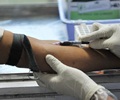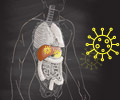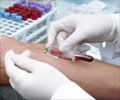Identifying communities with the greatest public health need in Massachusettes for resources relating to HIV/AIDS and hepatitis C is possible with a new study from epidemiologists.

Studies of mortality frequently use only one cause of death, but these studies often miss the underlying cause of death. To get a fuller picture, the research team looked at the contributing or underlying causes of death, related to HIV/AIDS or hepatitis C, as documented on death certificates from 2002 to 2011 in the Commonwealth of Massachusetts.
Hispanic and black populations die at rates up to five times greater than white and Asian populations from HIV/AIDS or hepatitis C, particularly those aged 45-65. Springfield, Worcester, South Boston, the Merrimack Valley, and New Bedford had the highest rates of death from HIV/AIDS or hepatitis C and are identified as the communities in greatest need of resources for reducing disparities.
"Many neighborhoods and towns are affected by these intertwined epidemics, but some neighborhoods and municipalities have been hit particularly hard. While these specific communities are hardest hit now, hepatitis C has been increasing in young, nonurban, white, populations so preventing transmission - particularly because it often takes about 20 to 30 years for symptoms to show up - is paramount," said senior author Tom Stopka, Ph.D., assistant professor of public health and community medicine at Tufts University School of Medicine.
"Comprehensive prevention should include health education, enhanced counseling and testing, linkage to care, and increased access to sterile syringes through syringe exchange programs and pharmacies. Expanded treatment is also essential, for both HIV and hepatitis C, to decrease transmission risks in local communities," he continued.
The research team looked at all death certificates in Massachusetts from 2002 to 2011 that had HIV/AIDS or hepatitis C as an underlying or contributing cause of death. Using population estimates, they calculated mortality rates in each census tract across the state by race and age.
Advertisement
Detailed findings:
- The research team found a total of 4,818 deaths associated with HIV/AIDS and 2,913 deaths associated with hepatitis C during the ten-year period.
- While HIV/AIDS deaths decreased over the ten-year period, hepatitis C deaths increased slightly.
- Age-adjusted mortality rates for hepatitis C were 2.9 per 100,000 people for white populations while they were 10 and 10.4 for black and Hispanic populations respectively.
- Age-adjusted mortality rates for HIV/AIDS were 1.6 per 100,000 people for white populations while they were 14.3 and 10.7 for black and Hispanic populations, respectively.
- The largest hotspots of HIV deaths occurred in the Greater Boston area, the Greater Worcester and Springfield areas, New Bedford, and Provincetown.
- The largest hotspots of hepatitis C deaths occurred in South Boston/Dorchester, New Bedford, Lawrence/Merrimack Valley, Springfield, Worcester, and Salem/Lynn/Peabody.
- Significant coldspots of mortality were also found for both hepatitis C and HIV/AIDS primarily in the metrowest region of Boston but also in the southeast.
Advertisement
No external funding contributed to this research.
Source-Eurekalert














